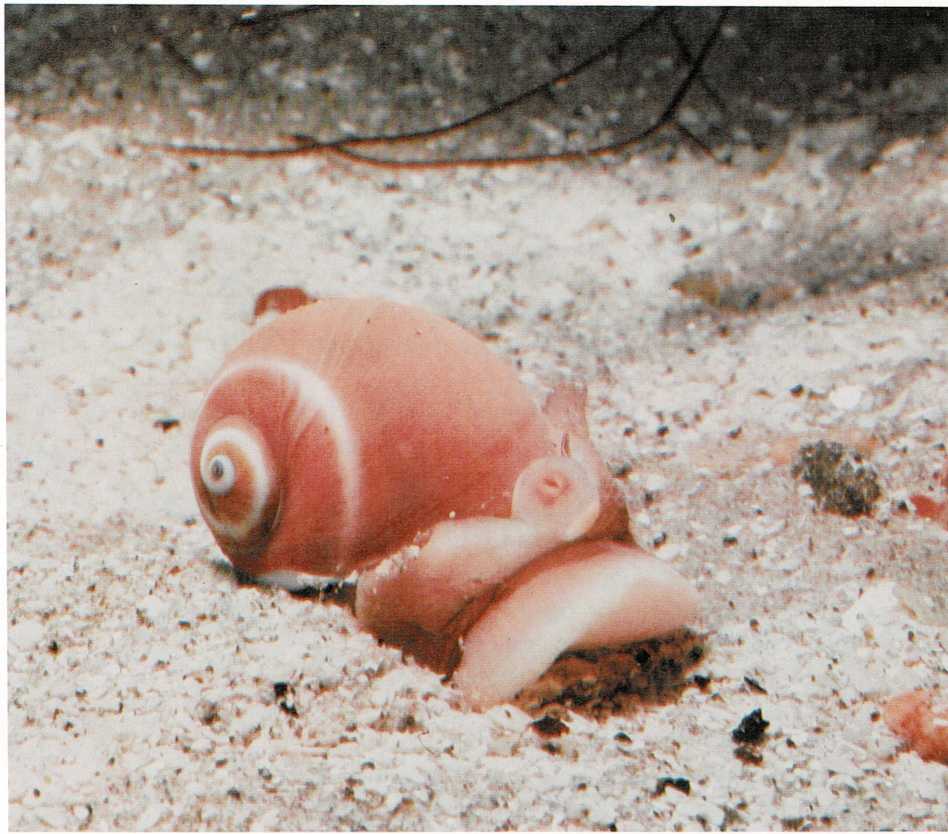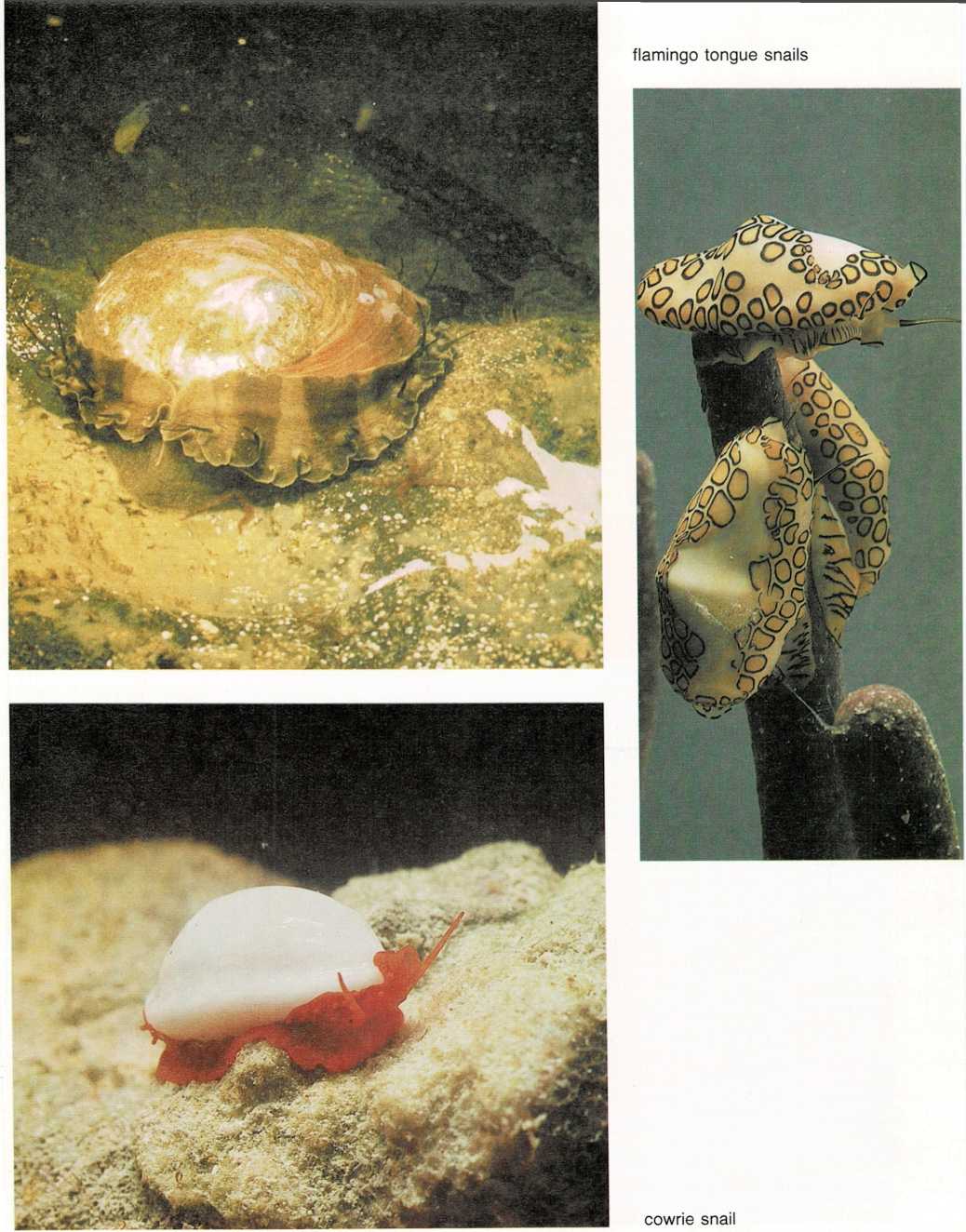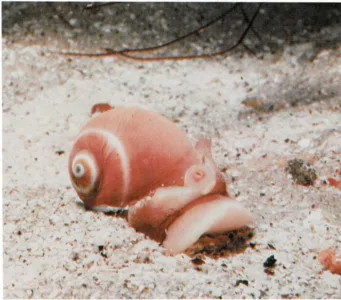
moon snail
The “belly-footed” ones
A large moon snail pushes its way through the speckled sand just below
the low tideline. The snail has a round shell that is some four inches
(10 centimeters) wide. Bulging out all around the shell is a thick,
fleshy \”foot.”
The snail moves very slowly, of course. It hardly seems possible that
such a sluggish creeper is a dangerous beast of prey—but it is! The
moon snail is a deadly hunter!
Some distance from the snail, a littleneck clam lies partly buried in
the sand. It is directly in the snail’s path. When the clam becomes
aware of its danger, it closes its shell tightly. This is its only
defense, for it cannot jump as some clams can.
But the clam is doomed. The snail crawls atop the clam and spreads its
body over the smaller creature. The snail’s snout touches the clam’s
shell. Drops of an acid-like liquid that the snail makes in its body
spread onto the shell and begin to eat a pit into it. Then the snail’s
tongue emerges. It is like a rubbery ribbon, covered with thousands of
tiny teeth.
Using its tongue like a file, the snail enlarges the pit made by the
acid. Soon, there is a hole in the helpless clam’s shell. Now the snail
begins to suck out bits of the clam’s soft body.
Many sea snails are meat-eaters like the moon snail. But others are
vegetarians. They use their toothed tongues to rub off tiny bits of
seaweed. And some kinds of snails eat dead things that they find.
Snails belong to the group of mollusks that are called gastropods
[(gas]{.smallcaps} truh pahdz).
Gastropod means \”belly foot.” A gastropod crawls mainly by means of
ripples that pass across its belly. So, a snail’s belly serves as a sort
of foot.
A snail has a blunt head at the front of its body. Some have a pair of
eyes on the head and some are eyeless. But even those with eyes probably
don’t see much more than a blur. However, snails have a good sense of
smell and a good sense of touch.
There are about fifty-five thousand kinds of salt-water snails. Each
kind of snail has its own distinctive shell. Many of these shells are
fantastically shaped and colored, and truly beautiful. Some are rounded
and some are long and cone-shaped. Others are quite twisted. Still
others have rows of spikes running across them.
Most snails can pull their head and foot inside their shell for
protection. But some snails have such a large foot that they can’t get
it into the shell. And some sea snails have hardly any shell.
One well-known kind of sea snail has a shell that looks much like half
of a big clam or oyster shell. This snail is the abalone (ab uh
[loh]{.smallcaps} nee). It is well-known because many people eat it. Its
broad, thick foot is called abalone steak.
The abalone lives near shore and feeds on mossy seaweed that grows on
rocks. It scrapes the seaweed off with its toothed tongue. Its broad
shell, which may be as much as a foot (30 cm) long, does not quite cover
its entire body. So the edge of its foot sticks out all around, looking
like a ruffle on a skirt.
When an abalone is in danger, it clamps its foot to a rock. And it holds
on so tight a strong man can’t pull it loose. Unfortunately for the
abalone, one of its main enemies, the starfish, can pry it loose. A
starfish is able to lift up an abalone just enough to slip its thin,
baglike stomach beneath the abalone’s foot. The starfish’s stomach then
begins to \”soak up” the abalone’s body.
The shell of a live abalone looks rather rough and dull. But when the
shell is cleaned, it gleams with colors. Mother-of-pearl, used to make
jewelry and ornaments, comes from the inside of the abalone shell.


